Almost one year ago today, I wrote a blog post on a beautiful Handroanthus impetiginosus that I found in flower while on a mountain bike ride. This time, while driving out to a small nursery to buy my Echeveria agavoides ‘Ebony‘, I ran across this gorgeous Handroanthus chrysotricha in full bloom. It is worthy of its own blog post. Handroanthus chrysotricha is one of the many trees that used to be in the genus Tabebuia. It took me a while to get used to not calling it Tabebuia chrysotricha.
Handroanthus chrysotricha (Golden Trumpet Tree) is one of those flowering trees that when you see one in full flower like this excellent specimen, you’ll find yourself asking why you don’t see it planted everywhere. Who wouldn’t want such a sight in their garden?
I believe the reason you don’t see Handroanthus chrysotricha (or other Handroanthus, for that matter) planted as much as they should be is simply due to the fact they are too slow for most gardeners or landscape specialists. A tree like the one posted here has to be 15-20 years from seed. Growers like quick turnover, and Handroanthus chrysotricha doesn’t offer that for them. Most landscapers plant trees for shade, and again, Handroanthus chrysotricha will only offer that with great age. The usual height for older trees you find in Southern California is around 15 to 25 feet tall. In their native South America, they grow to 50 feet tall. To most in Southern California, this plant is best considered a patio tree.
The Golden Trumpet Tree gets its name from the numerous trumpet-like, bright yellow flowers that blanket the tree while in bloom. A Golden Trumpet Tree like the one shown here blooms so profusely that you don’t really get a chance to appreciate the individual flowers. Which are quite impressive on their own. In fact, Handroanthus chrysotricha is the official flower of Brazil. That says a lot.
Handroanthus chrysotricha does show some drought tolerance. In fact, to get a massive bloom like this, gardeners have found that no supplemental watering in winter is key. These trees like to dry out when not actively growing.
I have mentioned in the past that I currently grow four different Handroanthus/Tabebuia in my garden. I have Tabebuia ‘Kampong Pink’ (most likely a Handroanthus as well), a white flowering Handroanthus impetiginosus, and an unknown Ipê collected from the wild in Brazil. I also grow a large flowering clone of Handroanthus chrysotricha which is currently leggy and very skinny. I am many years away from having my tree look like the one in this post.

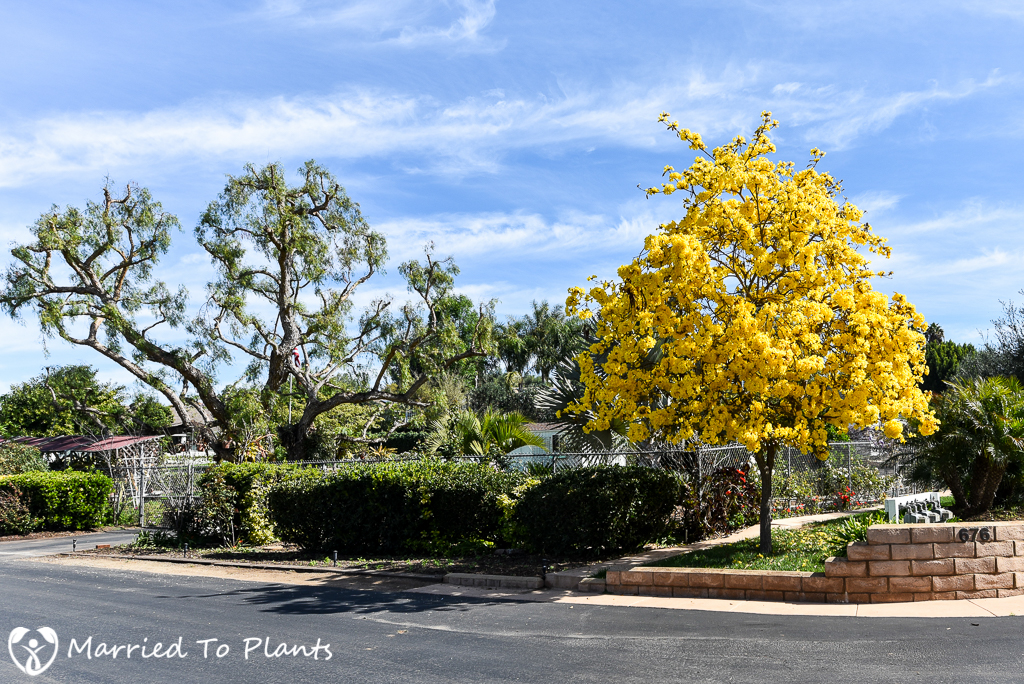
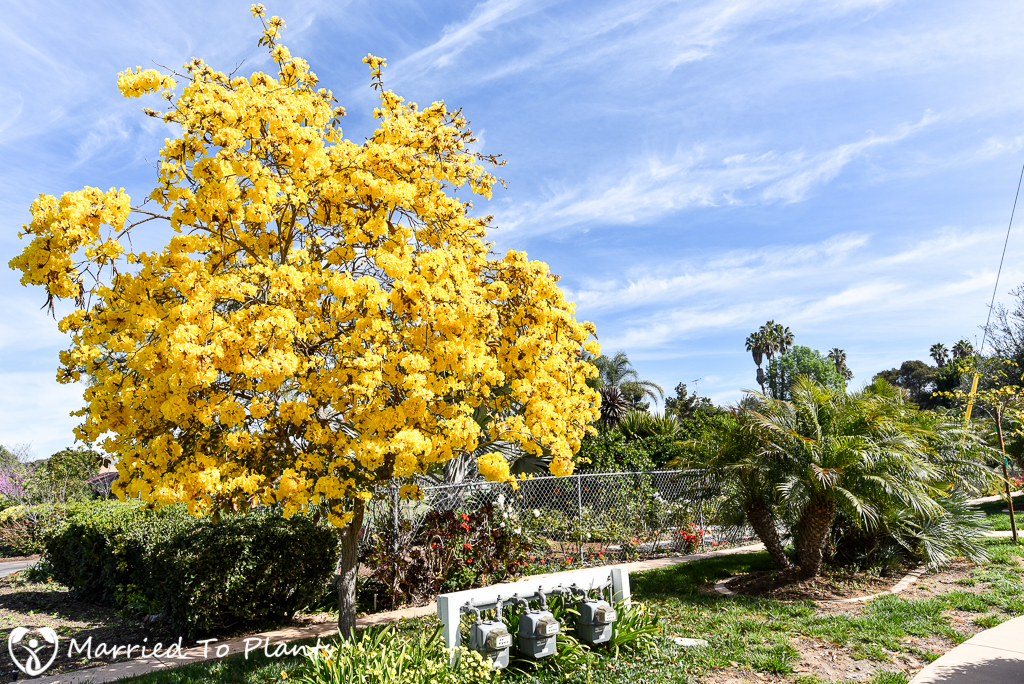

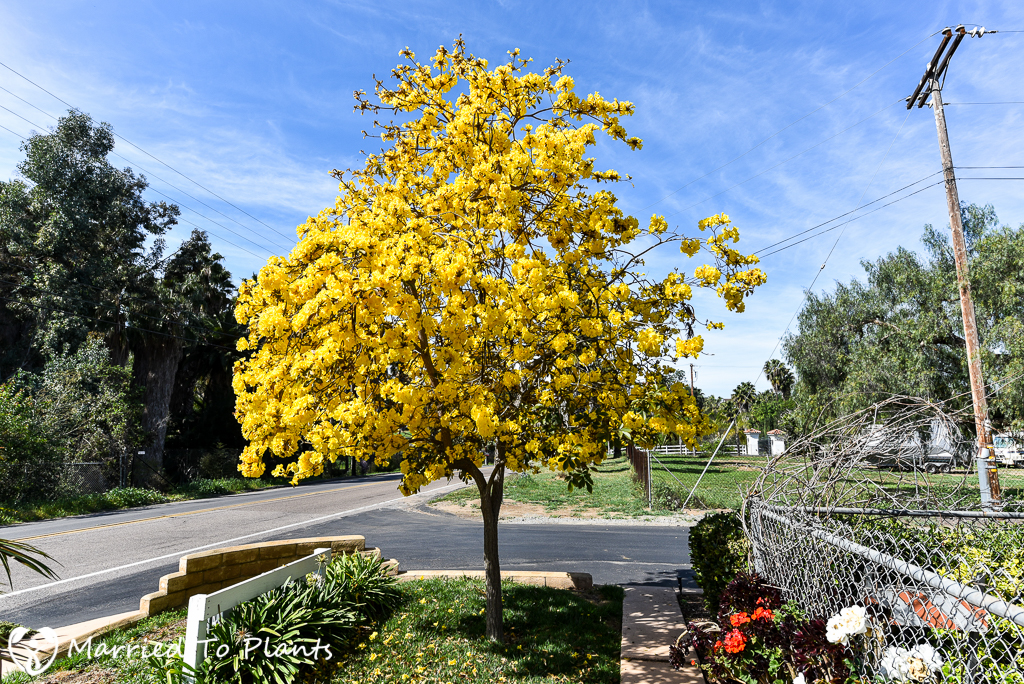
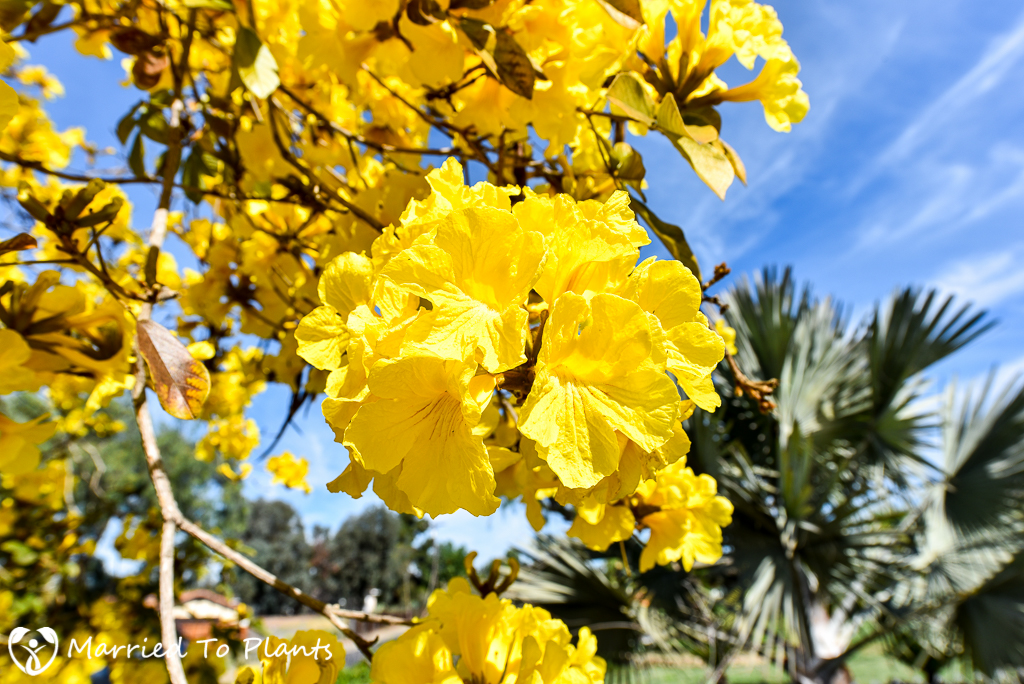
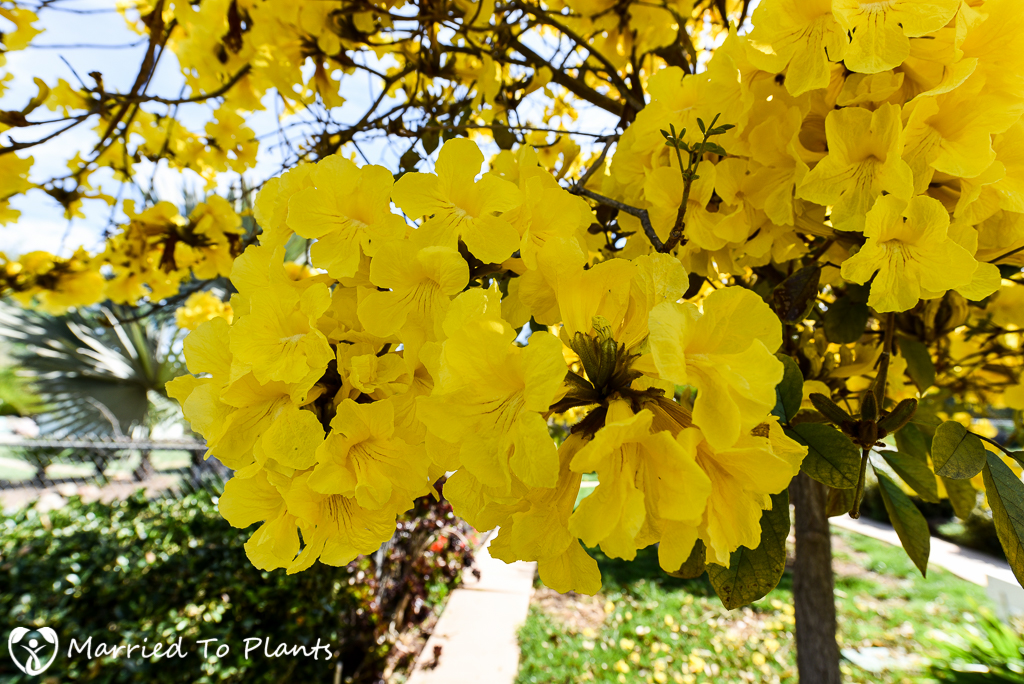

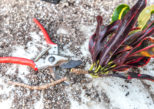
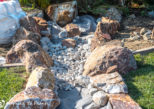

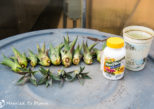
I’ve actually found them to be almost Racehorse fast to get height here in the SF Bay Area, particularly from seed. A selfsown seedling in one of my client’s gardens in Alameda, California right next to the bay is now 20 feet tall in just 5 years time. On the other hand, having planted out both 24 boxed size trees as well as 15 gallons, neither has been as fast growing as a direct in the ground seedling.
Unfortunately they just don’t bloom as prolifically up here by the bay, I suspect it’s a combination of cooler conditions year round and difficulty in keeping them dryer in winter. Regardless, they are still gorgeous when they bloom here in April, not February. There are some much more floriferous specimens along the property line fence at the Walnut Creek Ruth Bancroft Garden, where it’s both hotter in summer and dryer in winter. These trees are fairly hardy, and easily handle the Sunset Zone 14 conditions, and I’d recommend them for zones 14-17 here if planted in a heat trapping courtyard and with good drainage for sands or rocky soils. Also, much longer flower display if sheltered from the wind, otherwise one good windy period can end the show.
I wish I could have had success with the Hadroanthus argentea I brought back from a trip to Key West years ago. So beautiful in bloom in Miami, but just refused to grow much here in Berkeley, so in the 3rd year I got rid of it.
Hi David, I have seen the same thing. Larger, root wrapped plants in pots don’t grow well once planted out. Young plants put in the ground do much better. I think these trees hate being left in the pot for too long to where the main roots wrap.
I killed my T. argentea. I also lost my favorite Tab a few winters ago – T. ‘Carib Queen’. It would flower for months and it grew through two winters. I might try again as it was a great small tree.
I have two handroanthus impetiginosus I bought as a seedlings in October 2021 so I’m guessing they were germinated in the spring of that year and will be 3 yrs old this spring. I’m in Sacramento county where we get frost and subfreezing temps quite often and 100+ temps in the summer quite often. The first two years I kept them in containers and they barely grew. One was outgrowing the other so I planted it in November 2022 about 13ft from some large valley oaks that are growing over our yard from the east and neighbor’s side. That tree has been almost stunted because of the shadow the oaks cast from the east and the shadows my neighbor’s giant Chinese hackberry’s casts from the south. I’ve protected it two winters but it’s still only about 3ft tall and growing wide rather than tall. The other tree I planted last May where a larger tropical tabebuia I planted died last winter. It was at the time smaller than the other tabebuia. But from May 2023 to now it has tripled in size reaching about 6ft now and having a much thicker trunk caliper. I protect that tree when we get temps in the mid 30s because of our colder microclimate but all I’m doing it just loosely throwing frost blankets over it and wrapping it in some Christmas lights. It hasn’t had any die or damage from the cold or stopped growing so far. The growing has slowed down during the cold but there’s still new leaf foliage growing. Luckily this winter has been mild and I’ve haven’t had to cover it since the first week of this month. I hope we don’t get anymore frosts in February and by March I can remove the Christmas lights and put my frost blankets back into the garage.
Such a great tree. David’s correct about the ones at the Ruth Bancroft gardens… quite impressive in bloom. I had it (lost it due to neighbor) but may try it again. A large pot might not give it the glory of this image, but it’s still a sight to see.
How much maintenance is required for this tree? Annual pruning? Cleaning up leaf and seed pod drops? Self-sowing a problem? I’m in Santa Clara County. Thanks!